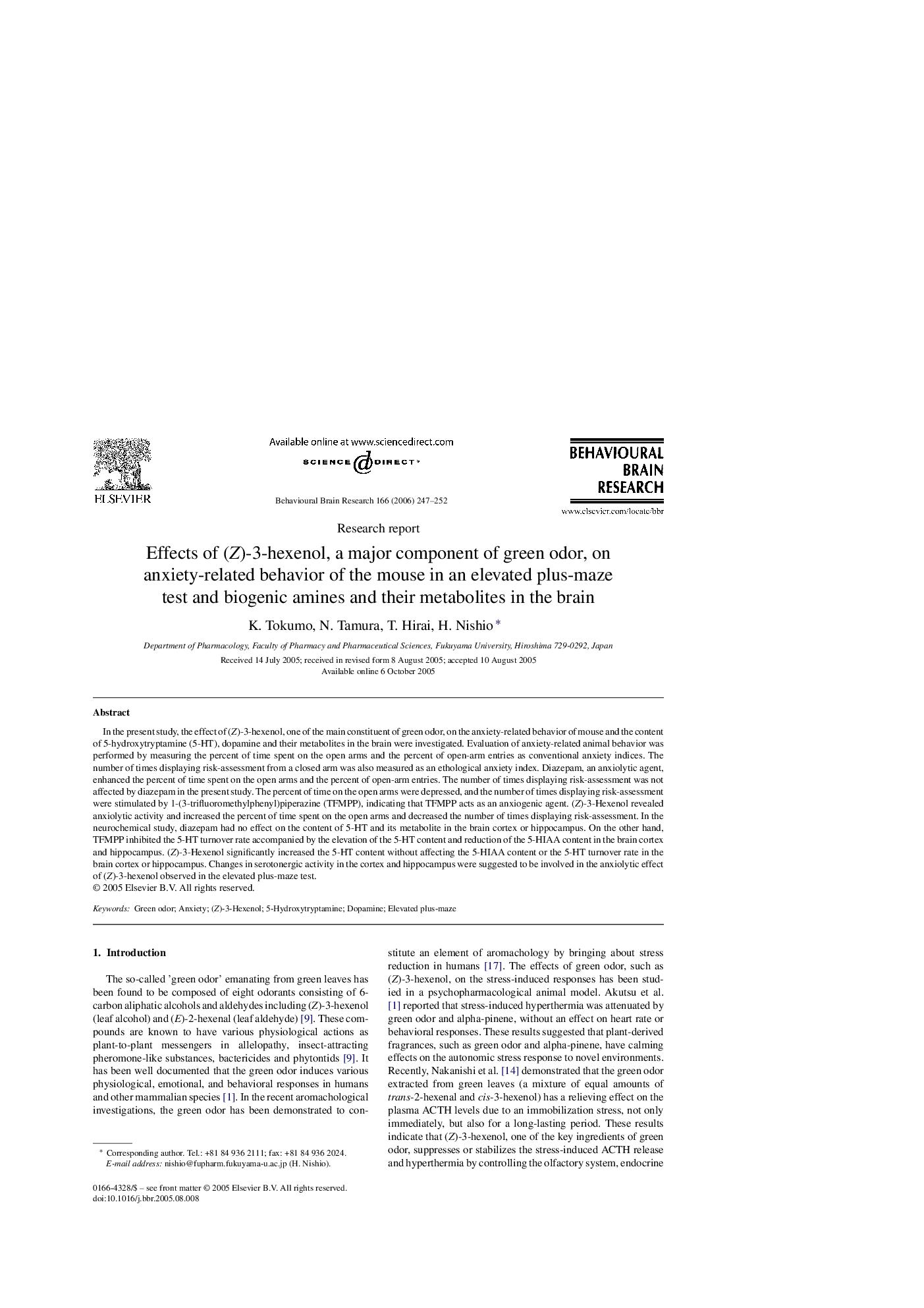| Article ID | Journal | Published Year | Pages | File Type |
|---|---|---|---|---|
| 4316224 | Behavioural Brain Research | 2006 | 6 Pages |
In the present study, the effect of (Z)-3-hexenol, one of the main constituent of green odor, on the anxiety-related behavior of mouse and the content of 5-hydroxytryptamine (5-HT), dopamine and their metabolites in the brain were investigated. Evaluation of anxiety-related animal behavior was performed by measuring the percent of time spent on the open arms and the percent of open-arm entries as conventional anxiety indices. The number of times displaying risk-assessment from a closed arm was also measured as an ethological anxiety index. Diazepam, an anxiolytic agent, enhanced the percent of time spent on the open arms and the percent of open-arm entries. The number of times displaying risk-assessment was not affected by diazepam in the present study. The percent of time on the open arms were depressed, and the number of times displaying risk-assessment were stimulated by 1-(3-trifluoromethylphenyl)piperazine (TFMPP), indicating that TFMPP acts as an anxiogenic agent. (Z)-3-Hexenol revealed anxiolytic activity and increased the percent of time spent on the open arms and decreased the number of times displaying risk-assessment. In the neurochemical study, diazepam had no effect on the content of 5-HT and its metabolite in the brain cortex or hippocampus. On the other hand, TFMPP inhibited the 5-HT turnover rate accompanied by the elevation of the 5-HT content and reduction of the 5-HIAA content in the brain cortex and hippocampus. (Z)-3-Hexenol significantly increased the 5-HT content without affecting the 5-HIAA content or the 5-HT turnover rate in the brain cortex or hippocampus. Changes in serotonergic activity in the cortex and hippocampus were suggested to be involved in the anxiolytic effect of (Z)-3-hexenol observed in the elevated plus-maze test.
